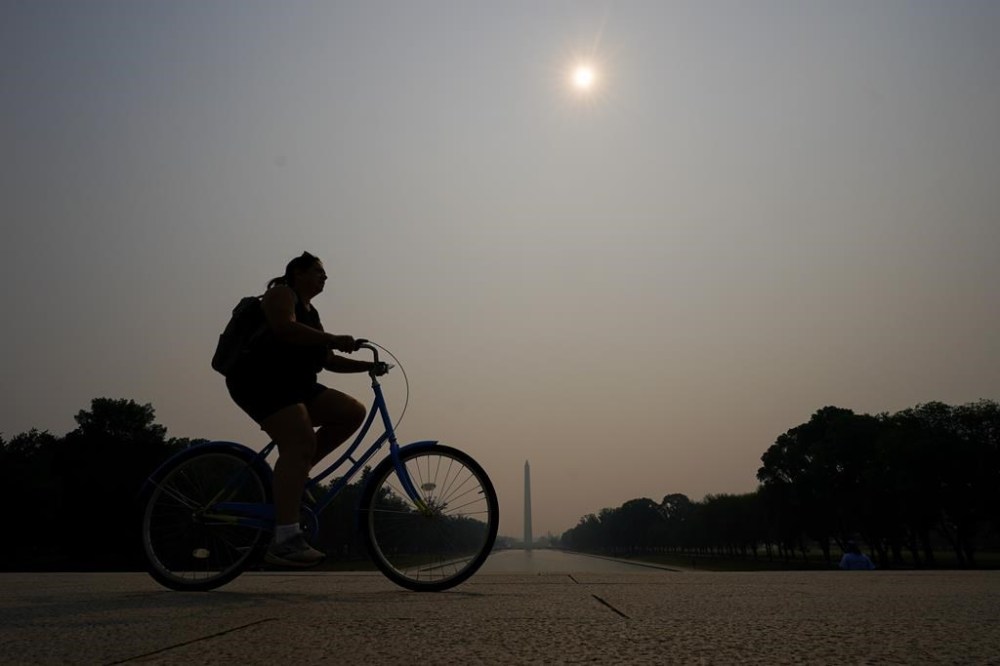How to stay healthy as smoke spreads from Canada wildfires
Advertisement
Read this article for free:
or
Already have an account? Log in here »
To continue reading, please subscribe:
Monthly Digital Subscription
$0 for the first 4 weeks*
- Enjoy unlimited reading on winnipegfreepress.com
- Read the E-Edition, our digital replica newspaper
- Access News Break, our award-winning app
- Play interactive puzzles
*No charge for 4 weeks then price increases to the regular rate of $19.00 plus GST every four weeks. Offer available to new and qualified returning subscribers only. Cancel any time.
Monthly Digital Subscription
$4.75/week*
- Enjoy unlimited reading on winnipegfreepress.com
- Read the E-Edition, our digital replica newspaper
- Access News Break, our award-winning app
- Play interactive puzzles
*Billed as $19 plus GST every four weeks. Cancel any time.
To continue reading, please subscribe:
Add Free Press access to your Brandon Sun subscription for only an additional
$1 for the first 4 weeks*
*Your next subscription payment will increase by $1.00 and you will be charged $16.99 plus GST for four weeks. After four weeks, your payment will increase to $23.99 plus GST every four weeks.
Read unlimited articles for free today:
or
Already have an account? Log in here »
Hey there, time traveller!
This article was published 07/06/2023 (891 days ago), so information in it may no longer be current.
NEW YORK (AP) — Massive fires are burning up stretches of Canadian forests and sending plumes of smoke into the U.S.
As a haze stretches over the East Coast and the Great Lakes, health authorities have raised the alarm about poor air quality.
An online, interactive map shows air quality conditions in the U.S.

Here’s how you can protect your health from the smoky haze.
STAY INDOORS
The small particles in wildfire smoke can irritate the eyes, nose and throat, and can affect the heart and lungs, making it harder to breathe. It’s important to limit outdoor activities as much as possible to avoid breathing in these particles, health agencies say. You should especially avoid strenuous activities like going for a run, since heavy breathing will increase the amount of smoke you inhale. And bring pets inside too: Animals are also affected by smoky conditions.
KEEP INSIDE AIR CLEAN
When inside, keep doors, windows and fireplaces shut so that smoke stays out. If you have a portable air purifier or HVAC system, run it to help keep the air clean, the Environmental Protection Agency recommends. Check that your filters are high quality and up to date. Make sure any filters or air conditioners are set to recirculate indoor air to avoid bringing in smoke from outside. If you have a window air conditioner, check that it’s sealed to the window as tightly as possible. And try to avoid activities that would add more particles to the air in your home — like smoking, burning candles or frying meat.
WEAR A MASK
If you go outside in smoky conditions, consider wearing a mask, like an N95, to protect your lungs. The mask should fit over your nose and under your chin, and seal tightly to your face to keep out the smoky air.
KNOW YOUR RISK
Some groups should be extra careful as they face higher risks from wildfire smoke. Children and older adults are especially sensitive to smoky conditions. Those with health conditions affecting the lungs or heart — like asthma or chronic obstructive pulmonary disease — face higher risks from poor air quality, along with those who are pregnant, according to the Centers for Disease Control and Prevention. People in these groups should take extra precautions and monitor for symptoms like coughing, trouble breathing or fatigue.
___
The Associated Press Health and Science Department receives support from the Howard Hughes Medical Institute’s Science and Educational Media Group. The AP is solely responsible for all content.


